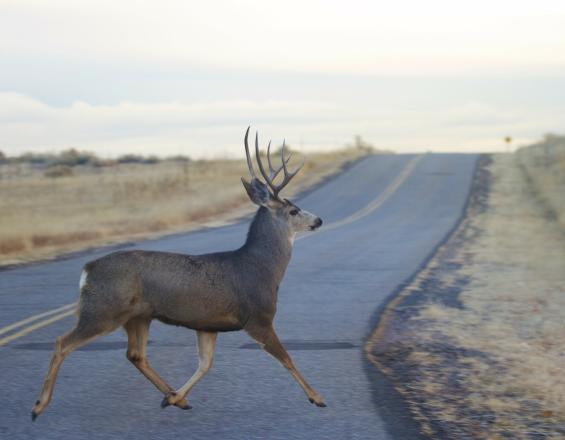Conservar la migración a larga distancia del ciervo bura

El ciervo mulo es una especie migratoria emblemática del oeste de Estados Unidos. En Wyoming se dan algunas de las migraciones de ciervos bura más largas e intactas de los 48 estados más bajos. A medida que aumentan las influencias antropogénicas y los ungulados migratorios siguen disminuyendo en todo el mundo, hay que hacer hincapié en la protección de las rutas migratorias.
Los ciervos mulos viajan a través de Wyoming para unirse a otros 5.000 ciervos mulos durante el invierno, donde continúan su migración hacia el norte. Un punto de pellizco conocido como el "cuello de botella" del lago Fremont constituía una grave amenaza para la ruta migratoria; los ciervos atraviesan dos veces al año una zona de 400 m de ancho. La ruta migratoria a través del cuello de botella estaba bloqueada por una alambrada de 2,5 m de altura. La zona se consideró importante para la migración y fue adquirida por la organización nacional sin ánimo de lucro Conservation Fund. Los terrenos se transfirieron al Departamento de Caza y Pesca de Wyoming y se designaron como zona de gestión de hábitats silvestres Luke Lynch para impedir la obstrucción del corredor migratorio.
Impactos
Al designarse zona de gestión de hábitats, el cuello de botella quedó protegido de cualquier desarrollo humano. Se bloquearon los planes de construir casas de campo junto al lago, lo que impide cualquier desarrollo futuro. La alambrada de 2,5 m se redirigió alrededor de la ruta migratoria para permitir que los 4.000-5.000 ciervos mulos atravesaran el punto de estrangulamiento. Esta zona clave de migración mantendrá su función de corredor para la migración del ciervo mulo y mantendrá la conectividad de las áreas de distribución del ciervo mulo.
Esta especie emblemática y toda la fauna silvestre se beneficiarán de este corredor, junto con las personas que dependen del ecosistema para su subsistencia y recreo.



